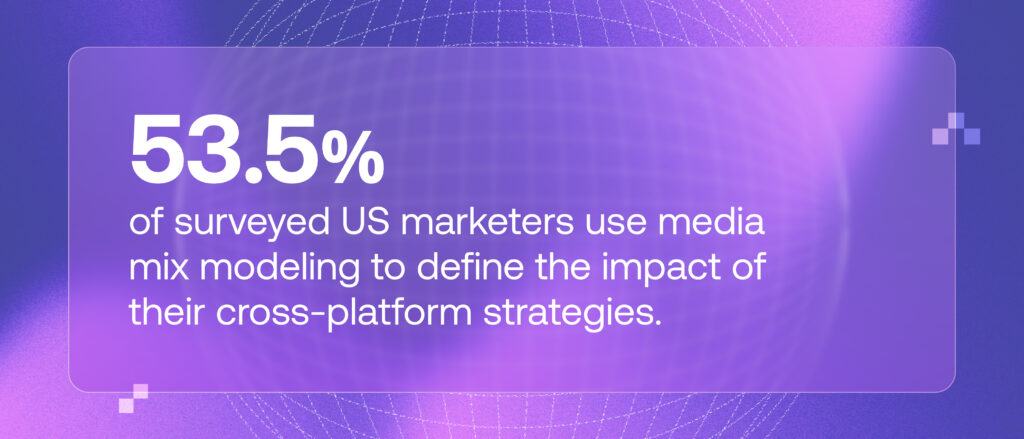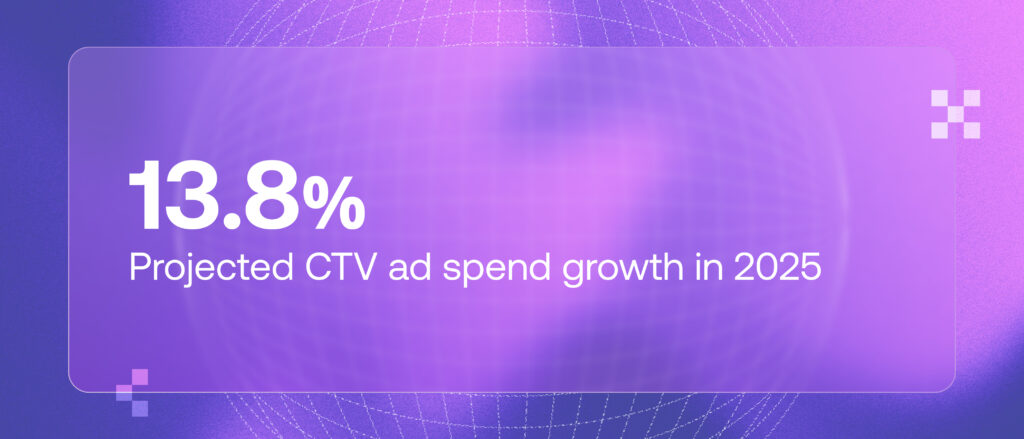Identifying Media Measurement Metrics for Cross-Platform Viewership

More devices mean more ways to watch media, but how do you capture that growing engagement? After all, combining viewership from linear TV, connected TV (CTV) and digital channels isn’t an entirely accurate measure of your ads’ impact—accounting for duplicative viewing habits is necessary to get a holistic view of your ad performance.
In the era of cross-platform media measurement, tracking viewer preferences, media mix modeling strategies and even live event trends is crucial.

Source: EMarketer, “Why media mix modeling, attention metrics may take the spotlight in 2025,” December 2024
Luckily, finding—and measuring—the right metrics isn’t as complicated as it sounds. When you have the right tools in place, you can capture the right analytics to inform your media strategy and make bigger moves toward your ROI as a brand or publisher.
In this article, we’ll cover:
- Why media measurement matters
- The most important metrics to capture
- Trending channels to watch
- Measurement tools and partners for your business
Why does media measurement matter?
Media measurement isn’t just a tried-and-true practice. In many cases, it’s the backbone of video advertising. This catchall term encompasses individual ad performance tracking, agile strategy adjustments and proof of ROI—so understanding why it matters is a no-brainer.
But, as cross-platform viewing habits grow, traditional measurement tactics don’t always hold up. Viewers, after all, no longer engage with media on a single screen. They’re multitaskers—they’re likely to stream via smart TV, scroll through social media and catch up on mobile devices all at once.
If you’re only measuring performance for one channel, you’re missing out on the bigger picture of your ads’ impact.
To keep up with viewers, you’ll likely need to level up your measurement strategy. By accounting for cross-platform habits—and the overlap where viewers see your ads in multiple placements—you can gain a better understanding of how your ads are actually capturing attention.
Not sure where to start? No problem. We recommend starting by asking yourself:
- How does my ad creative land and perform across screens?
- What metrics do I need to see to make small adjustments to my strategy?
- Where is my ad spend going, and what’s it doing for my business?
By customizing your metrics to your business’s goals, you can visualize a new—and better—way to execute your media measurement that supports higher ad performance and progress toward ROI.
What key metrics should I look for in media measurement?
So, how do you go beyond surface-level measurement and access metrics that matter most to your business? Generally, there are four key categories to keep in mind, each with their own nuances depending on your field. Those metric categories are:
- Reach and frequency
- Engagement
- Conversion
- Cross-platform intersections
Reach and frequency: more than just exposure
Ensuring viewers see ads is, of course, the basis of all video advertising—but there’s more to reach than simply getting ads on as many screens as possible. You can quantify reach through total impressions and standard demographics such as gender and age, but to maximize the effectiveness of your reach, consider honing your on-target reach (OTR): the total number of viewers you reach who represent your target audience. By targeting behavioral characteristics, you can pinpoint more helpful strategies to drive OTR.
Some of those strategies—including optimal frequency—help ensure the right number of ad exposures without bombarding viewers over and over again. Frequency is equally as valuable as reach, so understanding how often to show ads—and which audiences see them—is crucial. Intentional segmentation with your competitors’ ads in mind can also reveal areas to boost your media measurement strategy.
Engagement: the right moment to connect
Measuring engagement helps you visualize when and where viewers are most likely to lean in. Building engagement, though, is a more intentional practice. To optimize engagement in cross-platform environments, consider how smart content planning can help you deliver ads at precisely the right time. Tracking demands an ongoing cycle of measurement of your content—and your competitors’—but the payoff is worth the effort.
Conversion: showing when your ads are moneymakers
It’s not always easy to demonstrate conversion in video advertising, but finding an effective approach can make conversion seamless—and stronger—across digital and premium landscapes. To make your digital ads’ clicks and clickthrough rates (CTRs) higher, take a look at your formats. Do they offer click-to-shop functionalities for viewers? For premium video, do calls to action (CTAs) clearly offer enough value to incentivize viewers? By testing, iterating and tracking conversion strategies, you can take awareness to action to revenue more quickly.

Source: IAB, IAB Report Highlights Optimism in Digital Advertising with Double-Digit Growth for Retail Media, CTV, and Social, January 2025
Cross-platform intersections: where it all comes together
Viewers don’t stick to one screen, so neither should your ad strategy. Media measurement in cross-platform environments is a must-have for modern advertisers—but how can you quantify viewership when you can’t visualize your viewers’ experience? This is where unified measurement dashboards come into play. Some measurement providers offer seamless, single views of ad engagement across screens—giving you the insights you need to strengthen ad performance.
What trending media channels should I measure for now?
With a better understanding of the right metrics to capture, you can quantify your ads’ impact across the most impactful media channels.
Consider live sports. This energetic media environment is a goldmine for driving reach, engagement and conversion—and, with fans tuning in across devices, live sports is prime real estate if you’re ready to level up your ROI potential.
Cross-device engagement, though, is where many businesses fall short. While many viewers still gather around TVs to watch games live, they’re also watching highlight reels, catching replays and engaging with their favorite teams in shifting digital landscapes—all at once on handheld devices. The resulting fragmentation causes gaps in media measurement and leads to missed opportunities.
Fortunately, innovative solutions are stepping up to bat. With partners like VideoAmp, businesses can gain deeper visibility into how, when and where sports fans engage with a game—even if they’re tuning into multiple places at once. VideoAmp offers seamless measurement for:
- Precise advanced audiences. Combine first- and third-party data to go beyond standard demographics and visualize the full story of your ads’ reach and engagement.
- Cross-platform visibility. Make real-time ad optimizations simple with a single view of your ads’ performance across channels and screens.
- Attributed campaigns. Support your path to ROI by connecting ad conversions to your business’s goals.
Where can I find media measurement tools for my business?
We’re glad you asked. VideoAmp is an advertising partner with tools designed to help businesses drive reach, engagement and conversion in cross-platform environments. While key metrics can—and probably will—change over time, we’re dedicated to helping media companies like you reach ROI in a fluctuating landscape. If you’re ready for a cost-effective partnership that helps you demonstrate progress, we’re ready to chat.
